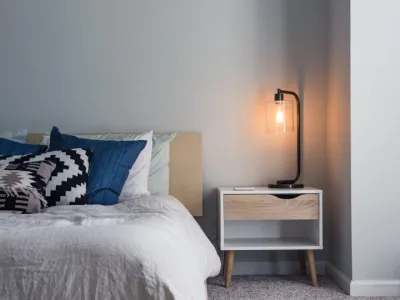Slip-Proof Your Home In 13 Easy Steps

Statistics show that falls are the cause of 87% of fractures among those over the age of 65. They are also the second leading cause of brain and spinal cord injuries. In the same age group, half are hospitalized for hip fractures due to a fall, and they cannot return to their homes or live on their own after the injury.
As older generations continue to age, their mobility, strength and balance diminish, and they face an increased risk of slipping, tripping and falling. For seniors, it is more difficult to recover from a fall-related injury since health complications due to a fall increase as one gets older. An elderly person actually faces an increased likelihood of death due to a fall than a younger individual, according to the Centers for Disease Control (CDC).
Aside from needing mobility aids and activity helpers to safely move around, seniors may also require assistance to help them become more mindful of their surroundings. Fortunately, improvements to the design of your home can lessen the chances of slips and falls. Here are 13 easy steps in slip-proofing their home:
1. Remove items or furniture that can cause a trip or slip.
This includes repositioning small furniture and freeing the home of clutter, electrical cords, decorations, and other things one can trip on. Minimize the objects scattered around the home, and create more space to walk around to decrease the chance of bumping into things.
2. Arrange the furniture so that there will be plenty of space left over for walking.
Remove anything that can obstruct hallways, pathways and stairs.
3. Beware of rugs and mats that are not secured to the floor or the stairs.
Remove these types of rugs and replace them with non-slip mats and rugs. If possible, it is better to carpet the entire floor area to avoid slipping altogether.
4. Place non-slip strips on stairs and floors.
Rubber mats or non-slip strips will also help prevent accidents in the bathroom, bathtub and shower. The bathroom is where most falls happen because it is wet most of the time. Slip-proof tiles are preferable to minimize the risk of falling.
5. Keep the floors of the home dry all the time.
Spills should be cleaned up immediately, and only non-skid wax should be used when cleaning the floors.
6. Accompany and assist those with reduced mobility on outdoor walks, and make sure the pathway is clear of snow or ice.
Often, the slip can happen just outside of the home, such as on a slippery sidewalk or icy stairs.
7. In the winter it is a good idea to regularly spread salt or sand on icy surfaces.
Wearing high-traction boots can be helpful when it is necessary to go outside. Minimize going out during snowy weather to avoid slippery surfaces.
8. Sometimes it is a matter of seeing the obstruction or pathway.
Make sure that all places are adequately lit. Adequate lighting is a must in all rooms, entrances, and pathways.
9. If you have stairways, good lighting becomes even more important.
Make the light switches more accessible by attaching them at the top and bottom landing of the stairs.
10. Put a lamp near the bed. Night lights in common areas, such as hallways and the kitchen, will also help make the floor more visible.
Plug night lights in the bedroom and bathroom, as well. Make sure that a flashlight is close by in case of power outages.
11. Install handrails on walkways and both sides of the stairs.
If there is an object to carry while using the stairs, hold the object in one hand and use the free hand to grasp the handrail. Better yet, have someone assist in carrying this item.
12. Install grab bars next to the toilet and inside the bathtub and shower.
These are helpful when getting in and out of the tub or getting up from the toilet. Make sure these grab bars are attached properly to the walls to avoid accidents.
13. Make sure that frequently used items are accessible.
Have food, clothing and entertainment within easy reach so it doesn't take much effort access them.
These steps can slip-proof the home and help reduce injuries. By taking these into consideration when renovating or redesigning your elderly loved one's home, you're improving their chance of enjoying a healthier and fuller life.
Written by Guest Author for The Healthy Moms Magazine and legally licensed through the Matcha publisher network. Please direct all licensing questions to legal@getmatcha.com.
We always perform Handyman services with your safety and comfort in mind. We know from extensive installation experience and by recommendations of reliable authorities like the Americans with Disabilities Act (ADA) how to most securely and permanently attach grab bars to your walls. For over 20 years, our Handyman techs have been handling everything from hanging pictures to replacing your kitchen countertops and backsplash or patching a hole in your ceiling or wall. Contact us to discuss your scope of work needed!